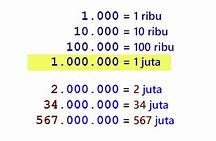
Northern tympanum mosaics
The northern tympanum mosaics feature various saints. They have been able to survive due to their high and inaccessible location. They depict Patriarchs of Constantinople John Chrysostom and Ignatios of Constantinople standing, clothed in white robes with crosses, and holding richly jewelled Bibles. The figures of each patriarch, revered as saints, are identifiable by labels in Greek. The other mosaics in the other tympana have not survived probably due to the frequent earthquakes, as opposed to any deliberate destruction by the Ottoman conquerors.[279]
The dome was decorated with four non-identical figures of the six-winged angels which protect the Throne of God; it is uncertain whether they are seraphim or cherubim. The mosaics survive in the eastern part of the dome, but since the ones on the western side were damaged during the Byzantine period, they have been renewed as frescoes. During the Ottoman period each seraph's (or cherub's) face was covered with metallic lids in the shape of stars, but these were removed to reveal the faces during renovations in 2009.[280]
Notable elements and decorations
Originally, under Justinian's reign, the interior decorations consisted of abstract designs on marble slabs on the walls and floors as well as mosaics on the curving vaults. Of these mosaics, the two archangels Gabriel and Michael are still visible in the spandrels (corners) of the bema. There were already a few figurative decorations, as attested by the late 6th-century ekphrasis of Paul the Silentiary, the Description of Hagia Sophia. The spandrels of the gallery are faced in inlaid thin slabs (opus sectile), showing patterns and figures of flowers and birds in precisely cut pieces of white marble set against a background of black marble. In later stages, figurative mosaics were added, which were destroyed during the iconoclastic controversy (726–843). Present mosaics are from the post-iconoclastic period.
Apart from the mosaics, many figurative decorations were added during the second half of the 9th century: an image of Christ in the central dome; Eastern Orthodox saints, prophets and Church Fathers in the tympana below; historical figures connected with this church, such as Patriarch Ignatius; and some scenes from the Gospels in the galleries. Basil II let artists paint a giant six-winged seraph on each of the four pendentives.[82] The Ottomans covered their faces with golden stars,[82] but in 2009, one of them was restored to its original state.[240]
The Architectural Design of Hagia Sophia
The main building is 82 meters high, and its dome is 55.6 meters high, with a 31.7-meter diameter and 40 windows. The building is placed on four massive columns made of green marble; each is 24.3 meters high. At the end of the 20th century, four hidden tilted pillars were discovered against the upper dome, meaning they are the oldest existing pillars in the history of architecture.
The building can be entered through nine doors. It has a basilica style (ancient Roman architecture) known by the Greeks in building their religious monuments and found in Rome. Their buildings are rectangular-shaped from inside and outside, with a spacious frontal atrium, surrounded by a long porch leading to side halls, one of which is the main hall, where the colossal dome rest on.
Halls Surrounding Hagia Sophia and Doors Leading to the Main Hall
Hagia Sophia’s Main Hall Ceiling from Inside
Aya Sofya Holds the First Prayer for 86 Years
Church of Constantius II
The first church on the site was known as the Magna Ecclesia (Μεγάλη Ἐκκλησία, Megálē Ekklēsíā, 'Great Church')[21][22] because of its size compared to the sizes of the contemporary churches in the city.[13] According to the Chronicon Paschale, the church was consecrated on 15 February 360, during the reign of the emperor Constantius II (r. 337–361) by the Arian bishop Eudoxius of Antioch.[23][24] It was built next to the area where the Great Palace was being developed. According to the 5th-century ecclesiastical historian Socrates of Constantinople, the emperor Constantius had c. 346 "constructed the Great Church alongside that called Irene which because it was too small, the emperor's father [Constantine] had enlarged and beautified".[25][23] A tradition which is not older than the 7th or 8th century reports that the edifice was built by Constantius' father, Constantine the Great (r. 306–337).[23] Hesychius of Miletus wrote that Constantine built Hagia Sophia with a wooden roof and removed 427 (mostly pagan) statues from the site.[26] The 12th-century chronicler Joannes Zonaras reconciles the two opinions, writing that Constantius had repaired the edifice consecrated by Eusebius of Nicomedia, after it had collapsed.[23] Since Eusebius was the bishop of Constantinople from 339 to 341, and Constantine died in 337, it seems that the first church was erected by Constantius.[23]
The nearby Hagia Irene ("Holy Peace") church was completed earlier and served as cathedral until the Great Church was completed. Besides Hagia Irene, there is no record of major churches in the city-centre before the late 4th century.[24] Rowland Mainstone argued the 4th-century church was not yet known as Hagia Sophia.[27] Though its name as the 'Great Church' implies that it was larger than other Constantinopolitan churches, the only other major churches of the 4th century were the Church of St Mocius, which lay outside the Constantinian walls and was perhaps attached to a cemetery, and the Church of the Holy Apostles.[24]
The church itself is known to have had a timber roof, curtains, columns, and an entrance that faced west.[24] It likely had a narthex and is described as being shaped like a Roman circus.[28] This may mean that it had a U-shaped plan like the basilicas of San Marcellino e Pietro and Sant'Agnese fuori le mura in Rome.[24] However, it may also have been a more conventional three-, four-, or five-aisled basilica, perhaps resembling the original Church of the Holy Sepulchre in Jerusalem or the Church of the Nativity in Bethlehem.[24] The building was likely preceded by an atrium, as in the later churches on the site.[29]
According to Ken Dark and Jan Kostenec, a further remnant of the 4th century basilica may exist in a wall of alternating brick and stone banded masonry immediately to the west of the Justinianic church.[30] The top part of the wall is constructed with bricks stamped with brick-stamps dating from the 5th century, but the lower part is of constructed with bricks typical of the 4th century.[30] This wall was probably part of the propylaeum at the west front of both the Constantinian and Theodosian Great Churches.[30]
The building was accompanied by a baptistery and a skeuophylakion.[24] A hypogeum, perhaps with an martyrium above it, was discovered before 1946, and the remnants of a brick wall with traces of marble revetment were identified in 2004.[30] The hypogeum was a tomb which may have been part of the 4th-century church or may have been from the pre-Constantinian city of Byzantium.[30] The skeuophylakion is said by Palladius to have had a circular floor plan, and since some U-shaped basilicas in Rome were funerary churches with attached circular mausolea (the Mausoleum of Constantina and the Mausoleum of Helena), it is possible it originally had a funerary function, though by 405 its use had changed.[30] A later account credited a woman called Anna with donating the land on which the church was built in return for the right to be buried there.[30]
Excavations on the western side of the site of the first church under the propylaeum wall reveal that the first church was built atop a road about 8 m (26 ft) wide.[30] According to early accounts, the first Hagia Sophia was built on the site of an ancient pagan temple,[31][32][33] although there are no artefacts to confirm this.[34]
The Patriarch of Constantinople John Chrysostom came into a conflict with Empress Aelia Eudoxia, wife of the emperor Arcadius (r. 383–408), and was sent into exile on 20 June 404. During the subsequent riots, this first church was largely burnt down.[23] Palladius noted that the 4th-century skeuophylakion survived the fire.[35] According to Dark and Kostenec, the fire may only have affected the main basilica, leaving the surrounding ancillary buildings intact.[35]
Why is aya sophia Controversial? Is It a Church or a Mosque?
There were many calls for reconverting Hagia Sophia into a mosque and a church by Muslims and Christians, respectively. However, the Turkish government decided to turn it back into a mosque building upon Sultan Mehmed Fatih’s decision of converting it into a mosque. It is also said that Sultan Mehmed Fatih bought this church from the Romans with his own money, turned it into a mosque, and endowed it to Muslims.
During a speech on reopening aya sophia to worship as a mosque, the Turkish president, Recep Tayyip Erdogan, emphasized that the Turkish government’s decision to turn the mosque into a museum in the 1930s was a big mistake. “The decision was not only a betrayal for history but also a law violation because Hagia Sophia is not state property, rather a property for the endowment of Sultan Mehmed Fatih,” said Erdogan.
Emperor Alexander mosaic
The Emperor Alexander mosaic is not easy to find for the first-time visitor, located on the second floor in a dark corner of the ceiling. It depicts the emperor Alexander in full regalia, holding a scroll in his right hand and a globus cruciger in his left. A drawing by the Fossatis showed that the mosaic survived until 1849 and that Thomas Whittemore, founder of the Byzantine Institute of America who was granted permission to preserve the mosaics, assumed that it had been destroyed in the earthquake of 1894. Eight years after his death, the mosaic was discovered in 1958 largely through the researches of Robert Van Nice. Unlike most of the other mosaics in Hagia Sophia, which had been covered over by ordinary plaster, the Alexander mosaic was simply painted over and reflected the surrounding mosaic patterns and thus was well hidden. It was duly cleaned by the Byzantine Institute's successor to Whittemore, Paul A. Underwood.[273][274]
The Empress Zoe mosaic on the eastern wall of the southern gallery dates from the 11th century. Christ Pantocrator, clad in the dark blue robe (as is the custom in Byzantine art), is seated in the middle against a golden background, giving his blessing with the right hand and holding the Bible in his left hand. On either side of his head are the nomina sacra IC and XC, meaning Iēsous Christos. He is flanked by Constantine IX Monomachus and Empress Zoe, both in ceremonial costumes. He is offering a purse, as a symbol of donation, he made to the church, while she is holding a scroll, symbol of the donations she made. The inscription over the head of the emperor says: "Constantine, pious emperor in Christ the God, king of the Romans, Monomachus". The inscription over the head of the empress reads as follows: "Zoë, the very pious Augusta". The previous heads have been scraped off and replaced by the three present ones. Perhaps the earlier mosaic showed her first husband Romanus III Argyrus or her second husband Michael IV. Another theory is that this mosaic was made for an earlier emperor and empress, with their heads changed into the present ones.[275]
The Comnenus mosaic, also located on the eastern wall of the southern gallery, dates from 1122. The Virgin Mary is standing in the middle, depicted, as usual in Byzantine art, in a dark blue gown. She holds the Christ Child on her lap. He gives his blessing with his right hand while holding a scroll in his left hand. On her right side stands emperor John II Comnenus, represented in a garb embellished with precious stones. He holds a purse, symbol of an imperial donation to the church. His wife, the empress Irene of Hungary stands on the left side of the Virgin, wearing ceremonial garments and offering a document. Their eldest son Alexius Comnenus is represented on an adjacent pilaster. He is shown as a beardless youth, probably representing his appearance at his coronation aged seventeen. In this panel, one can already see a difference with the Empress Zoe mosaic that is one century older. There is a more realistic expression in the portraits instead of an idealized representation. The Empress Irene (born Piroska), daughter of Ladislaus I of Hungary, is shown with plaited blond hair, rosy cheeks, and grey eyes, revealing her Hungarian descent. The emperor is depicted in a dignified manner.[276]
The Deësis mosaic (Δέησις, "Entreaty") probably dates from 1261. It was commissioned to mark the end of 57 years of Latin Catholic use and the return to the Eastern Orthodox faith. It is the third panel situated in the imperial enclosure of the upper galleries. It is widely considered the finest in Hagia Sophia, because of the softness of the features, the humane expressions and the tones of the mosaic. The style is close to that of the Italian painters of the late 13th or early 14th century, such as Duccio. In this panel the Virgin Mary and John the Baptist (Ioannes Prodromos), both shown in three-quarters profile, are imploring the intercession of Christ Pantocrator for humanity on Judgment Day. The bottom part of this mosaic is badly deteriorated.[277] This mosaic is considered as the beginning of a renaissance in Byzantine pictorial art.[278]
Mosque and former church in Istanbul, Turkey
Hagia Sophia,[a] officially the Hagia Sophia Grand Mosque,[b] is a mosque and former church serving as a major cultural and historical site in Istanbul, Turkey. The last of three church buildings to be successively erected on the site by the Eastern Roman Empire, it was completed in AD 537. The site was an Eastern rite church from AD 360 to 1453, except for a brief time as a Latin Catholic church between the Fourth Crusade and 1261.[4] After the fall of Constantinople in 1453, it served as a mosque until 1935, when it became a museum. In 2020, the site once again became a mosque.
The current structure was built by the Byzantine emperor Justinian I as the Christian cathedral of Constantinople for the Byzantine Empire between 532 and 537, and was designed by the Greek geometers Isidore of Miletus and Anthemius of Tralles.[5] It was formally called the Church of God's Holy Wisdom (Greek: Ναὸς τῆς Ἁγίας τοῦ Θεοῦ Σοφίας, romanized: Naòs tês Hagías toû Theoû Sophías)[6][7] and upon completion became the world's largest interior space and among the first to employ a fully pendentive dome. It is considered the epitome of Byzantine architecture[8] and is said to have "changed the history of architecture".[9] The present Justinianic building was the third church of the same name to occupy the site, as the prior one had been destroyed in the Nika riots. As the episcopal see of the ecumenical patriarch of Constantinople, it remained the world's largest cathedral for nearly a thousand years, until the Seville Cathedral was completed in 1520. Beginning with subsequent Byzantine architecture, Hagia Sophia became the paradigmatic Orthodox church form, and its architectural style was emulated by Ottoman mosques a thousand years later.[10] It has been described as "holding a unique position in the Christian world"[10] and as an architectural and cultural icon of Byzantine and Eastern Orthodox civilization.[10][11][12]
The religious and spiritual centre of the Eastern Orthodox Church for nearly one thousand years, the church was dedicated to the Holy Wisdom.[13][14][15] It was where the excommunication of Patriarch Michael I Cerularius was officially delivered by Humbert of Silva Candida, the envoy of Pope Leo IX in 1054, an act considered the start of the East–West Schism. In 1204, it was converted during the Fourth Crusade into a Catholic cathedral under the Latin Empire, before being returned to the Eastern Orthodox Church upon the restoration of the Byzantine Empire in 1261. Enrico Dandolo, the doge of Venice who led the Fourth Crusade and the 1204 Sack of Constantinople, was buried in the church.
After the fall of Constantinople to the Ottoman Empire in 1453,[16] it was converted to a mosque by Mehmed the Conqueror and became the principal mosque of Istanbul until the 1616 construction of the Sultan Ahmed Mosque.[17][18] Upon its conversion, the bells, altar, iconostasis, ambo, and baptistery were removed, while iconography, such as the mosaic depictions of Jesus, Mary, Christian saints and angels were removed or plastered over.[19] Islamic architectural additions included four minarets, a minbar and a mihrab. The Byzantine architecture of the Hagia Sophia served as inspiration for many other religious buildings including the Hagia Sophia in Thessaloniki, Panagia Ekatontapiliani, the Şehzade Mosque, the Süleymaniye Mosque, the Rüstem Pasha Mosque and the Kılıç Ali Pasha Complex. The patriarchate moved to the Church of the Holy Apostles, which became the city's cathedral.
The complex remained a mosque until 1931, when it was closed to the public for four years. It was re-opened in 1935 as a museum under the secular Republic of Turkey, and the building was Turkey's most visited tourist attraction as of 2019[update].[20]
In July 2020, the Council of State annulled the 1934 decision to establish the museum, and the Hagia Sophia was reclassified as a mosque. The 1934 decree was ruled to be unlawful under both Ottoman and Turkish law as Hagia Sophia's waqf, endowed by Sultan Mehmed, had designated the site a mosque; proponents of the decision argued the Hagia Sophia was the personal property of the sultan. The decision to designate Hagia Sophia as a mosque was highly controversial. It resulted in divided opinions and drew condemnation from the Turkish opposition, UNESCO, the World Council of Churches and the International Association of Byzantine Studies, as well as numerous international leaders, while several Muslim leaders in Turkey and other countries welcomed its conversion into a mosque.
The Viking Inscription
In the southern section of Hagia Sophia, a 9th-century Viking inscription has been discovered, which reads, "Halvdan was here." It is theorized that the inscription was created by a Viking soldier serving as a mercenary in the Eastern Roman Empire.[249]
The first mosaics which adorned the church were completed during the reign of Justin II.[250] Many of the non-figurative mosaics in the church come from this period. Most of the mosaics, however, were created in the 10th and 12th centuries,[251][better source needed] following the periods of Byzantine Iconoclasm.
During the Sack of Constantinople in 1204, the Latin Crusaders vandalized valuable items in every important Byzantine structure of the city, including the golden mosaics of the Hagia Sophia. Many of these items were shipped to Venice, whose Doge Enrico Dandolo had organized the invasion and sack of Constantinople after an agreement with Prince Alexios Angelos, the son of a deposed Byzantine emperor.
Church of Theodosius II
A second church on the site was ordered by Theodosius II (r. 402–450), who inaugurated it on 10 October 415.[36] The Notitia Urbis Constantinopolitanae, a fifth-century list of monuments, names Hagia Sophia as Magna Ecclesia, 'Great Church', while the former cathedral Hagia Irene is referred to as Ecclesia Antiqua, 'Old Church'. At the time of Socrates of Constantinople around 440, "both churches [were] enclosed by a single wall and served by the same clergy".[25] Thus, the complex would have encompassed a large area including the future site of the Hospital of Samson.[35] If the fire of 404 destroyed only the 4th-century main basilica church, then the 5th century Theodosian basilica could have been built surrounded by a complex constructed primarily during the fourth century.[35]
During the reign of Theodosius II, the emperor's elder sister, the Augusta Pulcheria (r. 414–453) was challenged by the patriarch Nestorius (r. 10 April 428 – 22 June 431).[37][38] The patriarch denied the Augusta access to the sanctuary of the "Great Church", likely on 15 April 428.[38] According to the anonymous Letter to Cosmas, the virgin empress, a promoter of the cult of the Virgin Mary who habitually partook in the Eucharist at the sanctuary of Nestorius's predecessors, claimed right of entry because of her equivalent position to the Theotokos – the Virgin Mary – "having given birth to God".[39][38] Their theological differences were part of the controversy over the title theotokos that resulted in the Council of Ephesus and the stimulation of Monophysitism and Nestorianism, a doctrine, which like Nestorius, rejects the use of the title.[37] Pulcheria along with Pope Celestine I and Patriarch Cyril of Alexandria had Nestorius overthrown, condemned at the ecumenical council, and exiled.[39][37]
The area of the western entrance to the Justinianic Hagia Sophia revealed the western remains of its Theodosian predecessor, as well as some fragments of the Constantinian church.[35] German archaeologist Alfons Maria Schneider began conducting archaeological excavations during the mid-1930s, publishing his final report in 1941.[35] Excavations in the area that had once been the 6th-century atrium of the Justinianic church revealed the monumental western entrance and atrium, along with columns and sculptural fragments from both 4th- and 5th-century churches.[35] Further digging was abandoned for fear of harming the structural integrity of the Justinianic building, but parts of the excavation trenches remain uncovered, laying bare the foundations of the Theodosian building.
The basilica was built by architect Rufinus.[40][41] The church's main entrance, which may have had gilded doors, faced west, and there was an additional entrance to the east.[42] There was a central pulpit and likely an upper gallery, possibly employed as a matroneum (women's section).[42] The exterior was decorated with elaborate carvings of rich Theodosian-era designs, fragments of which have survived, while the floor just inside the portico was embellished with polychrome mosaics.[35] The surviving carved gable end from the centre of the western façade is decorated with a cross-roundel.[35] Fragments of a frieze of reliefs with 12 lambs representing the 12 apostles also remain; unlike Justinian's 6th-century church, the Theodosian Hagia Sophia had both colourful floor mosaics and external decorative sculpture.[35]
At the western end, surviving stone fragments of the structure show there was vaulting, at least at the western end.[35] The Theodosian building had a monumental propylaeum hall with a portico that may account for this vaulting, which was thought by the original excavators in the 1930s to be part of the western entrance of the church itself.[35] The propylaeum opened onto an atrium which lay in front of the basilica church itself. Preceding the propylaeum was a steep monumental staircase following the contours of the ground as it sloped away westwards in the direction of the Strategion, the Basilica, and the harbours of the Golden Horn.[35] This arrangement would have resembled the steps outside the atrium of the Constantinian Old St Peter's Basilica in Rome.[35] Near the staircase, there was a cistern, perhaps to supply a fountain in the atrium or for worshippers to wash with before entering.[35]
The 4th-century skeuophylakion was replaced in the 5th century by the present-day structure, a rotunda constructed of banded masonry in the lower two levels and of plain brick masonry in the third.[35] Originally this rotunda, probably employed as a treasury for liturgical objects, had a second-floor internal gallery accessed by an external spiral staircase and two levels of niches for storage.[35] A further row of windows with marble window frames on the third level remain bricked up.[35] The gallery was supported on monumental consoles with carved acanthus designs, similar to those used on the late 5th-century Column of Leo.[35] A large lintel of the skeuophylakion's western entrance – bricked up during the Ottoman era – was discovered inside the rotunda when it was archaeologically cleared to its foundations in 1979, during which time the brickwork was also repointed.[35] The skeuophylakion was again restored in 2014 by the Vakıflar.[35]
A fire started during the tumult of the Nika Revolt, which had begun nearby in the Hippodrome of Constantinople, and the second Hagia Sophia was burnt to the ground on 13–14 January 532. The court historian Procopius wrote:[43]
And by way of shewing that it was not against the Emperor alone that they [the rioters] had taken up arms, but no less against God himself, unholy wretches that they were, they had the hardihood to fire the Church of the Christians, which the people of Byzantium call "Sophia", an epithet which they have most appropriately invented for God, by which they call His temple; and God permitted them to accomplish this impiety, foreseeing into what an object of beauty this shrine was destined to be transformed. So the whole church at that time lay a charred mass of ruins.
— Procopius, De aedificiis, I.1.21–22
FAQs about Hagia Sophia
Hagia Sophia is originally a Greek name, meaning “Holy Wisdom.” According to historical studies, Hagia Sophia was an Egyptian Coptic saint born in Badrashin, Giza.
She used to worship idols, but her feelings were directed towards Christianity due to her Christian neighbours, who persevered going to church and spread love and affection.
Sophia, whom her friends and neighbours influenced, wanted to learn more about Christianity and regularly went to church to learn. A few days later, she converted to Christianity.
However, the Byzantine ruler saw that her deeds angered the gods and ordered her to return to idolatry, but she refused. So, he ordered his soldiers to torture her with whips, cut off her tongue, and sent her into a dark cell. Finally, he ordered his guards to decapitate her.
When King Constantine and his mother, Queen Helena, heard of the many blessings of the saint in Egypt, he ordered to transfer her body to Istanbul after he had built a great church in her honour.
Located in the Sultan Ahmed district in Istanbul, Hagia Sophia is a unique art and architecture work; it is one of the most prominent architectural monuments in the Middle East. It used to be a mosque for 481 years, then turned into a museum in 1934.
King Constantine and his mother, Queen Helena, built it in 325 AD. After being burnt and destroyed, Hagia Sophia was rebuilt in 5 years by Emperor Justinian (Justinian I) to be completed in 573.
About 100 architects took part in the construction work, supervised by two senior architects. Every architect worked with 100 workers.
Hagia Sophia is located on the European side of Istanbul, in the Sultan Ahmed district.
Hagia Sophia was built in 325 AD by King Constantine and his mother, Queen Helena.
Hagia Sophia was originally a church before it was turned into a mosque by Sultan Mehmed Fatih in 1453. Then it was turned into a museum in 1934 by Mustafa Kemal Ataturk, and finally back to a mosque in 2020.
The Most Beautiful Places in Alanya
Information about Baghdad Street
Edited by Safaraq Tourism
Hagia Sophia kembali jadi masjid setelah sempat berstatus museum dan ditetapkan UNESCO sebagai warisan dunia. Melalui akun Twitternya, Presiden Turki Recep Tayyip Erdogan menganggapnya sebagai kebangkitan bangunan bersejarah tersebut.
"Kebangkitan Hagia Sophia...," tulis Erdogan di akun @RTErdogan yang dilihat detikcom pada Sabtu (11/7/2020). Tweet ini mendapat 23 ribu retweet dan komentar serta 76 ribu like dari para netizen.
SCROLL TO CONTINUE WITH CONTENT
Kembalinya Hagia Sophia menjadi masjid sesuai Majelis Negara Turki membatalkan keputusan kabinet pada 1934. Keputusan ini mengundang reaksi dari masyarakat internasional, dengan sebagian mendukung dan menolak keputusan tersebut.
Terlepas dari reaksi netizen, warga internasional, dan sikap tiap negara, Hagia Sophia memang punya sejarah yang sangat panjang. Dikutip dari History, Hagia Sophia jadi saksi kejatuhan dan kebangkitan dinasti penguasa Turki.
Hagia Sophia dalam bahasa Turki disebut Ayasofya sedangkan dalam bahasa latin adalah Sancta Sophia. Nama Hagia Sophia artinya adalah kebijaksanaan sesuai peruntukan bangunan tersebut sebagai rumah ibadah.
360 Masehi: Kaisar Bizantium, Constantius I, memerintahkan pembangunan Hagia Sophia sebagai sebuah gereja untuk umat Kristen Ortodoks Yunani di Konstantinopel yang kini bernama Istanbul. Awalnya gereja ini beratapkan kayu.
404 : Bangunan Hagia Sophia pertama terbakar akibat kerusuhan yang terjadi di sekitar bangunan tersebut. Kerusuhan diakibatkan konflik politik antar keluarga Kaisar Arkadios yang kemudian menjadi penguasa pada 395-408 AD.
415: Struktur kedua Hagia Sophia selesai dibangun Kaisar Theodosis II yang merupakan penerus Arkadio. Bangunan yang baru memiliki lima nave (tempat bangku-bangku umat) dan jalan masuk yang khas dengan atap terbuat dari kayu.
532: Dikutip dari Encyclopedia Britannica, Hagia Sophia terbakar kedua kalinya dalam peristiwa Revolusi Nika atau Nika Revolt. Revolusi tersebut melawan Kaisar Justinian I yang memerintah pada 527-565. Saat itu Hagia Sophia masih menjadi bangunan penting penganut Ortodoks Yunani.
532: Masih di tahun yang sama, Kaisar Justinian memerintahkan penghancuran Hagia Sophia karena kondisinya yang rusak parah. Dia memerintahkan pembangunan kembali gereja tersebut dengan menunjuk arsitek Isidoros (Milet) dan Anthemios (Tralles).
537: Pembangunan ketiga Hagia Sophia selesai dalam lima tahun dan ibadah pertama dilakukan pada 27 Desember 537. Saat itu Kaisar Justinian disebut mengatakan, "Tuhanku, terima kasih atas kesempatan membangun sebuah tempat ibadah."
Hagia Sophia melanjutkan perannya yang sangat penting dalam politik dan sejarah Bizantium, termasuk menjadi saksi Perang Salib. Wilayah Konstantinopel termasuk Hagia Sophia sempat berada di bawah kekuasaan Romawi untuk waktu singkat. Kekaisaran Bizantium dikisahkan berhasil menguasai kembali kota tersebut dan Hagia Sophia yang kembali rusak.
Perubahan besar Hagia Sophia selanjutnya terjadi sekitar 200 tahun kemudian saat Dinasti Ottoman menguasai Kontantinopel. Di bawah pimpinan Sultan Muhammad Al Fatih (Mehmed II), dinasti ini berhasil menaklukkan wilayah tersebut dan mengganti namanya menjadi Istanbul pada 1453.
Dengan pengaruh Islam, Hagia Sophia diubah menjadi masjid dengan menutup ornamen bangunan yang bertema Orthodox. Ornamen diganti kaligrafi yang didesain Kazasker Mustafa İzzet. Kaligrafi tersebut antara lain tulisan Allah SWT, Nabi Muhammad SAW, empat khalifah pertama, dan dua cucu Rasulullah SAW.























